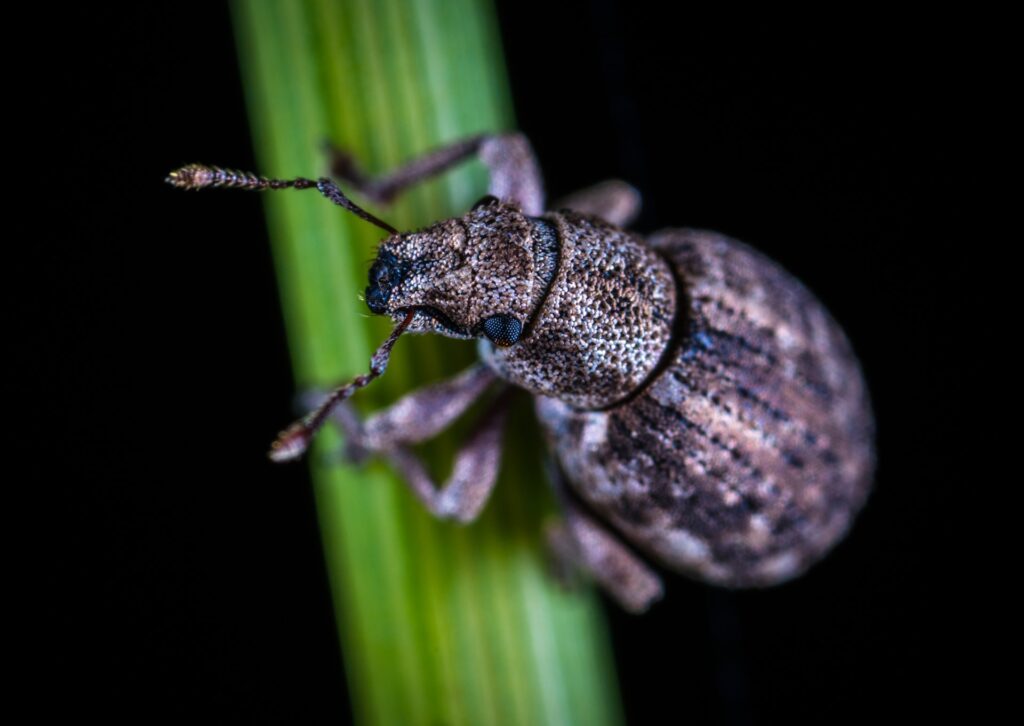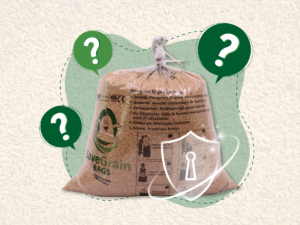To attain food security, it is essential to not only increase agricultural production, but also decrease post harvest food losses. One of the major causes of food loss is damage caused by insects and pests during the storage period, making the grain unfit for human consumption. Many grain pests also eat out grain embryos, lowering the protein content of feed grain and the percentage of seed germination.
Improper storage conditions can promote the growth of these insects.
Let’s take a look at the type of insects harming the agricultural produce during storage.
The main storage pests, apart from rodents, are beetles and moths. Moreover, grain insect pests are divided into two types: primary and secondary.
- Primary grain insects have the ability to attack whole, unbroken grains, eg: some beetles, weevils and moths. These include both internal and external feeders.
- Secondary grain insects can attack only damaged, broken or moist grain, dust and milled products such as flour, eg: flour beetles.
Primary storage insects

- Rice weevil (Sitophylus oryzae): Both adults and larvae attack the grain, making it unfit for consumption. Crops attacked include rice, wheat, barley, maize, sorghum, etc. Heating takes place during heavy infestation. The grains are hollowed out, and kernels reduced to mere powder.
- Khapra beetle (Togoderma granarium): It feeds on wheat, maize, rice, jowar, pulses, oil seeds, peas, etc. The adults are harmless, but grubs cause damage, entering the grain at embryo point. Crowding of larvae leads to unhygienic conditions, and excessive moulting causes drop in market value. Damage is usually confined to peripheral layers of the bags in bulk storage.
- Lesser grain borer (Rhizopertha dominica): The adult is more harmful than the grub, feeding on wheat, rice, maize, sorghum, barley, gram, etc, reducing grain kernels to mere frass. Grubs feed on grain dust and can attack the grain externally, too.
- Angoumois grain moth (Sitotroga cerealella): While the adults are generally harmless, the larvae hollow out the grains. These include paddy, maize, oat, jowar, barley, and wheat. It feeds inside and remains in a single grain only. It can attack in fields as well as during storage.
- Pulse beetle (Callosusbruchus chinensis): It attacks all whole pulses, wheat, grams, peas, soya bean, beans, etc. The grubs eat up the kernel and make a cavity, then the adult comes out making exit holes.
Secondary storage pests
- Rust red flour beetle (Tribonium castaneum): Attack broken grains, milled products such as flour, maids, etc. Heavy infestation causes a stinking odour in flour, compromising the dough quality and making it unfit for human consumption. Flour beetles are secondary pests of all grains and primary pests of all milled products.
- Saw toothed grain beetle (Oryzaephilus surinamensis): Adults and grubs cause roughening of grain surface; heavy infestation leads to heating of grain. This includes rice, wheat, maize, cereal products, oil seeds, and dry fruits.
- Rice moth (Corcyra cephalonica): Larvae damage the grain, contaminating it with frass, moults, and dense webbing. Feed on rice, jowar, whole cereals, cereal products, pulses, oil seeds, nuts, dry fruits, and milled spices.
- Fig or Almond or Warehouse Moth (Ephestia cautella): Larvae feed on the germ portion of wheat, rice, maize, sorghum, groundnuts, spices, and leave the rest of the kernel undamaged.
- Indian meal moth (Plodia interpunctella): It attacks maize, cereal, dry fruits, groundnuts and cereal products. But the larvae especially cause serious damage to the ear and grain of maize, contaminating it with excreta, cast skin’s, webbing, and cocoons, making the grain unviable.
These are just some of the common insect pests that damage grain during storage, and contribute to food loss.
Proper storage conditions can help to counteract the problems that emerge as a result of infestations. Save Grain Bags offers hermetic storage bags, which provide air-tight and moisture-tight control, protecting the grain from climate changes and insects, and preserving it in optimal form.
To know more about our products, click here.





